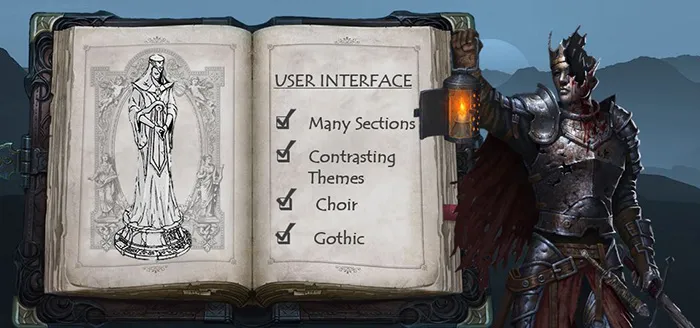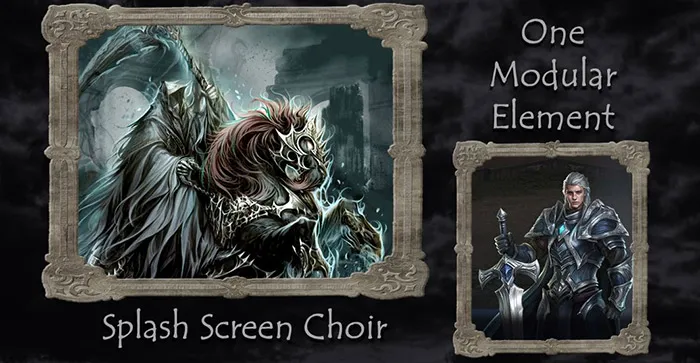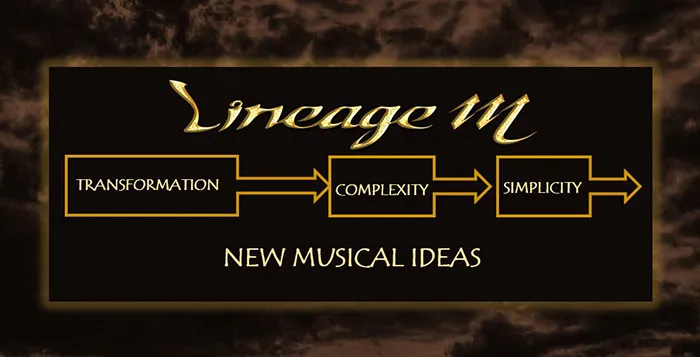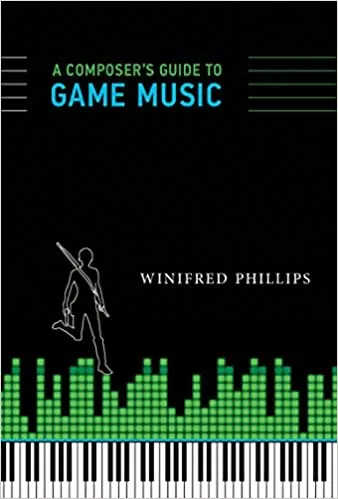
By Winifred Phillips | Contact | Follow
So happy you’ve joined us! I’m video game composer Winifred Phillips, and this is the fourth article in my series based on my Game Developers Conference 2022 presentation, “Composing for Lineage M: Modular Construction in Game Music.” I’ve included the content of my GDC lecture in these articles, along with the videos and some of the images I used in my Powerpoint presentation during the conference.
In the first three articles of this series, we discussed the port of the popular Lineage PC game from 1998 to mobile devices under the name Lineage M, and the subsequent launch of brand-new content for this world-famous game in the DLC release Lineage M: The Elmor.

I described what it was like creating new music for this venerable game over the course of those three articles. By developing a music system with a modular approach, the awesome audio team at NCSoft and I sought ways to best maximize the utility of the music for Lineage M: The Elmor, while accommodating a game engine designed in the 1990s. You’ll find all these ideas discussed in detail in these three articles:
Part One: Techniques for Modular Game Music (Composing for Lineage M: GDC 2022)
Part Two: Structure for Modular Game Music (Composing for Lineage M: GDC 2022)
Part Three: Stemming for Modular Game Music (Composing for Lineage M: GDC 2022)
We just concluded our discussion of the role that stemming plays in the modular approach. In general terms, we’ve explored how rhythms, melodies, countermelodies, and instrumentation can be structured as discrete components intended for multiple configurations. In the case of Lineage M, the game engine wouldn’t accommodate a dynamic implementation – but we did have the ability to compile the modules and then prepare a large assortment of configurations as one-shots. Everything was in the same tempo and key – all the modules were compatible – we had lots of options.
While dynamic construction is primarily designed to allow music to react fluidly to gameplay, it also extends the utility of music by maximizing every single aspect of it. If the original composition is constructed with a modular approach, it becomes immediately more applicable to multiple circumstances in-game. For Lineage M, the expert audio team at NCSoft and I used the modular approach to avail ourselves of as many of the options afforded by dynamic construction, despite the limitations.

So now, before we begin looking at the implementation of this system in the game, I first want to talk a little bit about the global menu music I composed for Lineage M: The Elmor. Unlike in-game music, global music is designed to accomplish intrinsically different objectives, so it has to be approached from a fresh perspective. I discussed the definition of global music in my book, A Composer’s Guide to Game Music (The MIT Press):
“We all know that the word “global” refers to something that pertains to the whole world. For our purposes, a global track is a piece of music that can be played anywhere in the game. Such music has no stylistic connection with any particular in-game site or event, and would be appropriate in any location or circumstance. These tracks tend to be heard most frequently and therefore are very important in defining the musical style of the game… A menu track is a piece of music triggered whenever the player activates a type of options list that temporarily pauses the action and simultaneously blocks the player’s view of the game…. As long as the menu can be accessed throughout the game, it can be considered global.” Chapter 9, pages 148-149)
In Lineage M: The Elmor, the global music consisted of compositions for the user interface menu and the game’s splash screen (i.e. the top screen that appears immediately when players launch the game). Unlike the in-game music, these UI and splash screen compositions made a sharp departure from the key and tempo that governed the rest of the musical score. Nevertheless, the user interface music was also a modular construct; so let’s explore that.
Like the in-game music, the user interface music consisted of a collection of modules. Since the music wouldn’t be used during gameplay, we focused on thematic rather than kinetic utility. We didn’t need lots of variety in terms of pacing – the rhythm wouldn’t need to scale broadly between different levels of tension and excitement. Nevertheless, the music was going to be used for multiple menus and during some storytelling moments, so it had to be flexible for those purposes.
In composing the user interface music, I focused primarily on sections as the primary modular unit. The music is highly sectional, with lots of contrasting thematic content including choir. This was also an opportunity for me to have some fun with the overly gothic aspects of this game.

Since Lineage M: The Elmor revolves around a Grim Reaper-inspired character, I based the user interface music on the Latin text of the Requiem mass, specifically focusing on the portions that describe an ultimate judge delivering justice during the day of reckoning. The idea seemed thematically appropriate.

I’ve included the full Latin lyric and English translation for the user interface music below:
| LATIN
Dies irae, judex est venturus! Dies irae, dies illa! Quantus tremor est futurus, Quando judex est venturus! Juste judex ultionis, Donum fac remissionis! Rex tremendae majestatus! Culpa! Culpa rubet vultus meus! Quid sum – quid sum miser tunc dicturus? Quantus – quantus tremor est futurus! Quando judex – judex est venturus! Dies irae! Quando judex est venturus! |
ENGLISH
This day of wrath, the judge shall come! This day, this day of wrath! How much trembling there will be, When the judge shall come! Righteous judge of vengeance, Grant the gift of release! King of awful majesty! Guilt! My face reddens with guilt! What shall I – what shall I, a wretch, say then? How much – how much trembling there will be! When the judge – the judge shall come! This day of wrath! When the judge shall come! |
When the music was used during the game’s launch screen, the modular system focused on the most thematic sections of the score, leaning heavily into the choral passages. Here’s a video of the game’s launch screen, so that you can see how that works. The Latin here translates as, “This day of wrath! How much trembling there will be, when the judge shall come!”
Having the music under the launch screen convey strongly thematic content was a great way to assert a musical identity for the game, and convey an inherent sense of mood and momentum. The music was also written in distinct modular sections, which allowed for the order of musical ideas to be juggled around. When moving forward into the character selection menu – the user interface music shifted its order, deleting some of the thematic passages, so that the music could focus more narrowly on orchestral content:
This is a simple example, but a great way to show how the same piece of music can accomplish different tasks depending upon what content is emphasized, and what content is omitted. The Splash Screen communicates identity and personality by virtue of the assertive choir passages and the liturgical influences. The character selection menu focuses on kinetic energy and a more modern swagger, with the guitar power chords and the string ostinatos.
While choir passages were deemphasized in character creation, they came back in-game during a narrative cutscene. This was a situation in which using only one modular element from a larger composition worked very well. In this narrative scene, the choir from the Splash Screen music was used completely by itself.

Hearing that choir singing the Latin text of the Requiem Mass a capella conveyed a nicely spooky atmosphere while the player character interacted with the Grim Reaper. So let’s check that out:
A modular system like this one is all about transformations. Music is built up in complexity, broken down into simplicity, disassembled into components, mixed and matched to create new textures and musical ideas. A full mix will have a dramatically different emotional impact in comparison to the same music broken down into just a few structural elements. And those structural elements – an isolated melody line, a repeating pattern, a fragment of rhythm – those things feel dramatically different when removed from their original contexts and transplanted elsewhere in the game’s musical score.

In our next article, we’ll be delving into practical considerations for the modular system during gameplay. Until then, thanks for reading!

Winifred Phillips is a BAFTA-nominated video game composer whose latest project is the Jurassic World Primal Ops video game (the official game of the blockbuster movie Jurassic World Dominion). Other recent releases include the hit PlayStation 5 launch title Sackboy: A Big Adventure (soundtrack album now available). Popular music from Phillips’ award-winning Assassin’s Creed Liberation score was featured in the performance repertoire of the Assassin’s Creed Symphony World Tour, which made its Paris debut in 2019 with an 80-piece orchestra and choir. As an accomplished video game composer, Phillips is best known for composing music for games in many of the most famous and popular franchises in gaming: the list includes Assassin’s Creed, God of War, Total War, The Sims, and Sackboy / LittleBigPlanet. Phillips’ has received numerous awards, including an Interactive Achievement Award / D.I.C.E. Award from the Academy of Interactive Arts and Sciences, six Game Audio Network Guild Awards (including Music of the Year), and three Hollywood Music in Media Awards. She is the author of the award-winning bestseller A COMPOSER’S GUIDE TO GAME MUSIC, published by the MIT Press. As one of the foremost authorities on music for interactive entertainment, Winifred Phillips has given lectures at the Library of Congress in Washington DC, the Society of Composers and Lyricists, the Game Developers Conference, the Audio Engineering Society, and many more. Phillips’ enthusiastic fans showered her with questions during a Reddit Ask-Me-Anything session that went viral, hit the Reddit front page, received 14.9 thousand upvotes, and became one of the most popular gaming AMAs ever hosted on Reddit. An interview with her has been published as a part of the Routledge text, Women’s Music for the Screen: Diverse Narratives in Sound, which collects the viewpoints of the most esteemed female composers in film, television, and games. Follow her on Twitter @winphillips.







